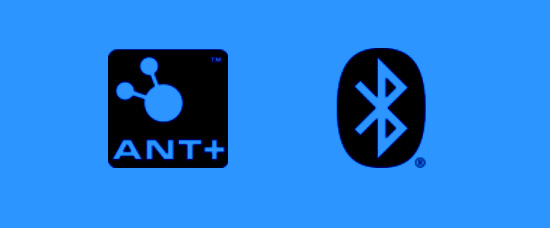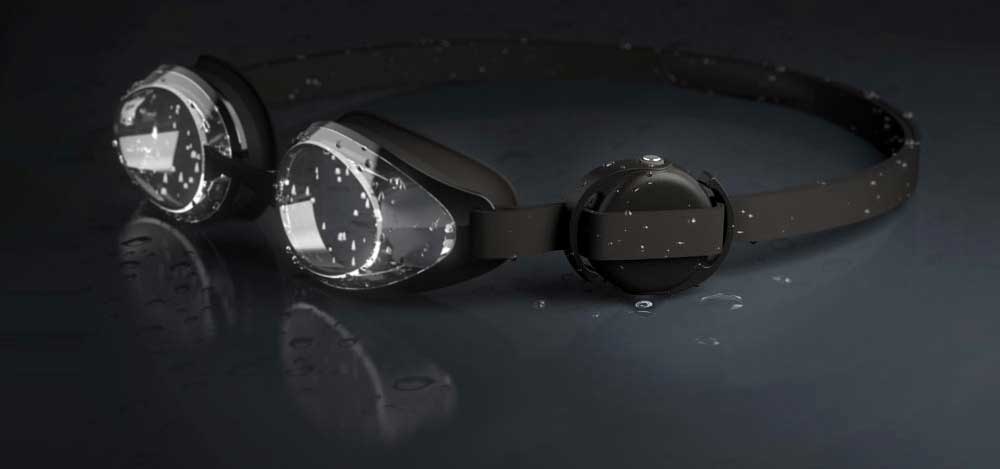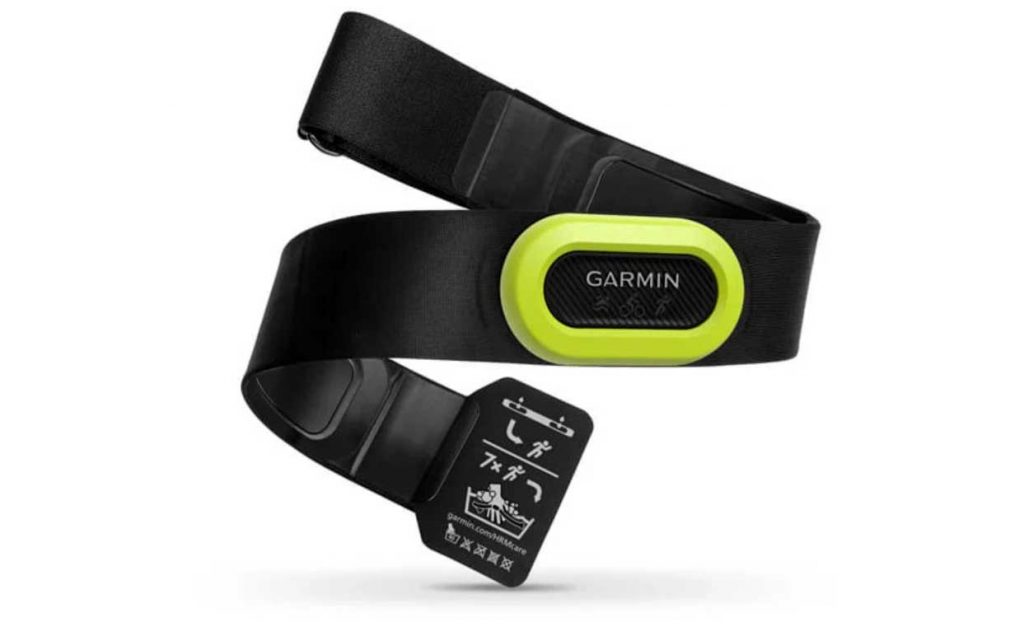Getting one of the best heart rate chest strap monitors is a great way to monitor your heart rate, overall fitness level, and progress. Not to mention anything about tracking the overall intensity of a workout to see if you are in the right ‘zone.’ But more about that later.
In short, there are tons of reasons to get a great heart rate monitoring sensor. So, here are our top 5 picks!
Contents
- 1 Best Heart Rate Chest Strap Monitors: Quick Peek
- 2 Things to Consider Before Buying
- 3 1. Polar H10: Best Overall
- 4 2. Garmin HRM-Pro and HRM-Pro Plus: Most Feature-Rich HRM Strap
- 5 3.POLAR Verity Sense Optical Heart Rate Sensor: Best Optical Heart Rate Arm Strap Monitor
- 6 4. Powr Labs Pulsr+: Best Budget Option
- 7 5. Wahoo TICKRx: Best Value
- 8 Wrapping Up
Related reading
- Which Smartwatch has the best heart rate tracking accuracy? It depends
- The best running pods and sensors to measure your cadence and running skills!
- 6 Best Gadgets and Fitness Gear to complement your Strength Training
- Reviewing Lumen’s personal metabolism tracker as a vegan
As an Amazon Associate, we earn from qualifying purchases using links in this post.
Best Heart Rate Chest Strap Monitors: Quick Peek
- Polar H10: All around, the best chest strap monitor you can get. It’s a bit pricey, but it offers excellent accuracy, Bluetooth, and ANT+ connectivity, superb battery life, and a lot of built-in memory.
- Garmin HRM-Pro: Ideal for those who are particularly interested in running. This one offers certain features that you are not going to find on your typical chest strap monitor. Just keep in mind that it costs a bit of a premium.
- Polar Verity Sense: Great pick if you want an arm wrap and prefer having an optical sensor. Just keep in mind that optical sensors are not considered accurate as electric ones – especially if you can’t get one to sit tight enough on you.
- Powr Labs Pulsr+: A superb budget option with dual-band Bluetooth 4.0 & ANT+ protocol connectivity and built-in memory for working out away from smartphones or other devices.
- Wahoo TICKR: Another great option with Bluetooth & ANT+ technology built-in includes a top-mounted LED indicator to quickly confirm your TICKR X is capturing heart rate data and is connected to your phone.
Things to Consider Before Buying
Before we start checking out chest strap monitors, you may want to keep a few things in mind. Things that will make your search for the best heart-rate monitor much easier.
Why Get a Heart Rate Chest Strap Monitor?
A heart-rate monitor is no doubt great for monitoring your heart rate. But what’s the point of getting one?
Tracking your heart rate can be beneficial for reasons such as:
- Knowing that you are in a healthy and fit range
- Tracking the overall fitness levels through time (The more fit you are, the lower your heart rate is)
- Knowing if you are performing an exercise at the correct level of intensity for the best results (Different body goals require different levels of intensiveness. Things like burning or gaining fat, building muscles, etc.)
The 3rd part is also the hardest.
After all, it requires you to know your resting heart rate and your maximum heart rate, and only then can you calculate how fast the heart rate needs to be to achieve specific results. But that’s a topic for another time.
Last, but not least, it’s worth keeping in mind that, unlike smartwatches, chest strap heart rate monitors use electrical pulse instead of optical solutions. This is generally considered more accurate and is not affected by movement as much.
Bluetooth VS ANT+ Monitors 
Bluetooth and ANT+ refer to the connectivity options that a sensor offers. Some have only one or the other, while certain sensors come with both.
And while there are quite a few differences to talk about here, the main takeaway is:
- ANT+ sensors can be connected to multiple other devices at once. But it’s worth keeping in mind that most smartphones nowadays don’t feature ANT+ connectivity.
- Bluetooth devices primarily work in a 1-to-1 connection. Some allow you to connect to multiple devices, but that’s mostly the exception rather than the rule. And while you generally can’t use a Bluetooth sensor with numerous other devices, most of our everyday devices, like smartphones, come with Bluetooth; not ANT+
If you want to learn more about ANT+ versus Bluetooth, please check out this article.
Extra Features and Battery Life
Some chest strap heart rate monitors offer extra features that you may want to look forward to—things like cadence metrics, vertical oscillation, ground contact time, and more.
Some may want to skimp on such features and get something cheaper – which is completely fine. It’s all a matter of personal preference and needs.
That aside, battery life may be another thing to keep in mind. The great thing about chest strap heart rate monitors is that, unlike smartwatches, their battery life can last for months or even years.
Strap Width
This is mostly a matter of personal preference and comfort. But you should definitely pay attention to the strap’s width and choose something that feels okay to you.
Optical VS Electric HRM
Most chest strap monitors use electric pulses to read your heart rate. On the other hand, optical sensors use a strong, often green light to shine through your skin and track blood flow.
Most seem to agree that electric monitors are more accurate.
But take that info with a grain of salt as that’s mostly based on the theory that an optical sensor can send false data when it slides on your body. And since it uses visual data to determine your heart rate, all that movement can “confuse” it.
And while that sounds logical, we’ve yet to see any real-world testing that proves this.
So, if you know anything more on this subject, please let us and everyone else know about it in the comments section.
At this point, it’s worth keeping in mind that all smartwatches use optical sensors for heart rate monitoring.
1. Polar H10: Best Overall 
Most people agree that the Polar H10 is possibly the best chest strap HRM (Heart Rate Monitoring) sensor that you can get right now. It’s undoubtedly a bit pricey – but it works with almost everything.
- Compatibility/Connectivity: Bluetooth up to 2 connections9
- and ANT+
- Built-in memory: For one training session
- Battery life: 400 hours
- Sizes: XS-S (20-26 inches) and M-XXL (26-36 inches)
- WORKS WITH EVERYTHING: Polar HRM works with ALL HRM compatible Equipment.
- SUPREME ACCURACY: Widely recognized for its top precision by many sources, Polar H10 is the most...
Apart from how accurate it is, one of its biggest advantages is that it offers both ANT+ and Bluetooth connectivity. What’s more, you can connect it to up to 2 Bluetooth devices simultaneously – which is not something that you often see with Bluetooth gadgets, in general.
So, this basically means that you can use this strap with pretty much anything—smartphones, bikes, etc.
Now, the battery life of 400 hours is nothing insane as far as straps are concerned. But the good thing is that battery replacement is easy with the H10 (unlike the older versions).
At the end of the day, the main reason why the Polar H10 is our top pick is primarily due to the comfort and accuracy that it offers rather than its connectivity options. Speaking of connectivity options, don’t forget that you don’t necessarily need a Polar smartwatch. Anything that has Bluetooth or ANT+ should get the job done (But you’ll probably need the app if we are talking about Bluetooth devices.
Pros:
- Fairly comfortable
- One of the most accurate sensors out there
- It offers both Bluetooth and ANT+ connectivity
- Allows you to connect it with Bluetooth to up to 2 devices
- Polar Flow app adds additional support to sync your training data to Apple Health, Google Fit, and other apps like Strava
Cons:
- Limited built-in storage compared to other premium options
- A bit pricey
2. Garmin HRM-Pro and HRM-Pro Plus: Most Feature-Rich HRM Strap 
Garmin is one of the most popular brands for fitness gadgets, with plenty of great options out there – and the Garmin HRM-Pro and HRM-Pro Plus are no exception. The only difference between the Pro and Pro-Plus is the battery door–the Pro requires a tool while the Pro-Plus is tool free.
- Compatibility/Connectivity: Bluetooth up to 2 connections and ANT+
- Built-in memory: 18 hours of data
- Battery life: Up to a year (1 hour of tri training – approximately 365 hours)
- Sizes: 23.5-42 inches up to 56 inches with a strap extender
- Premium heart rate strap transmits real-time heart rate data via ANT technology and BLUETOOTH Low...
- Captures running dynamics, such as vertical oscillation, ground contact time, stride length,...
Like our top pick, the Garmin HRM-Pro offers both Bluetooth with up to 2 simultaneous connections and ANT+ connectivity.
But the one thing it does that most chest strap heart rate monitors don’t is that it captures running dynamics such as stride length, cadence, vertical oscillation, and anything related to running.
So, in a way, this is more suitable for those serious about gathering detailed information about their workouts. But it’s also a bit more pricey.
Other than that, the specs are also on par with other premium options. You get 18 hours of built-in memory recording for when you are out of range and up to about a year of regular usage before replacing the battery – assuming that you are working out regularly for one hour per day.
To wrap things up, if you are interested in tracking detailed running metrics, this is the bests chest strap HRM that you can get.
Pros:
- Great for tracking running metrics in detail
- Offers both ANT+ and Bluetooth (With up to 2 connections at once for BT)
- Built-in memory and great battery life are always welcome additions
- Can track activity with Garmin Connect app
Cons:
- Pretty expensive
- We could use a bit more built-in storage at this price point
3.POLAR Verity Sense Optical Heart Rate Sensor: Best Optical Heart Rate Arm Strap Monitor 
As we mentioned above, electric sensors are generally considered more accurate than optical ones. That’s mainly due to the fact optical sensors rely on optical data. And if an optical sensor moves around during a workout, it will not send accurate data.
If you want anything other than a traditional chest strap monitor, optical sensors are the way to go.
- Compatibility/Connectivity: Bluetooth and ANT+
- Built-in memory: Up to 600 hours
- Battery life: 12 hours (Rechargeable – not replaceable)
- Sizes: Tightens on your arm
- COMFORT: Polar Verity Sense keeps your wrist free for maximum comfort and freedom of movement. Just...
- CONVENIENCE: With only one button, using Polar Verity Sense couldn't be easier. Just switch it on...
Since this is actually not a chest strap, some of you may think it doesn’t deserve a spot on this list. But we wanted to present an alternative option for those who changed their mind and think that chest straps are not that comfortable after all.
Swim with your Polar Verity Sense sensor!
One of the biggest advantages of the Polar Verity arm strap sensor, when compared to chest strap sensors, is that you can place it on your swimming goggles. 
This placement eliminates the drag you can feel with chest straps while swimming but continues to track your heart rate, pace, and distance in the pool with swimming mode.
The sensor sits against your temple using the swimming goggle strap clip that fits most swimming goggles.
Some people may feel pressure on their temples to be highly uncomfortable. But that’s mostly a matter of personal preference.
With that said, one downside to keeping in mind is battery life. Unlike chest strap monitors that can last for hundreds of hours of usage, the Polar Verity only lasts for up to 20 hours before you have to recharge it.
And while 20 hours are probably enough to get most people through a week, constantly reminding yourself that the monitor needs to be recharged a bit annoying. Especially if you compare it to chest straps, you forget that the battery needs to be replaced until it dies.
That aside, this heart rate monitor supports both Bluetooth and ANT+. So, no complaints there.
Pros:
- A bit more flexible on how you can use it (both on your arm or swimming goggles)
- Generally, comfier when swimming compared to chest straps (unless you have sensitive temples)
- Rechargeable battery
- Plenty of built-in memory
- Polar Flow app adds additional support to sync your training data to Apple Health, Google Fit, and other apps like Strava
Cons:
- Generally not as accurate as chest strap monitors
4. Powr Labs Pulsr+: Best Budget Option 
Good chest strap monitors are usually a bit pricey. But if you are after something slightly cheaper, even if that means sacrificing a couple of features, the Powr Labs Pulsr+ is a great option!
- Compatibility/Connectivity: Bluetooth and ANT+
- Built-in memory: None
- Battery life: A year (Free replacement if it fails sooner, according to the official website)
- Sizes: 26 to 38 inches
- Super Comfortable - A chest strap heart rate monitor made with super soft, stretchable material that...
- Easy-to-Use - Want Chest Heart Rate Monitors that pair instantly? Our heart monitor for exercise...
One of the biggest sacrifices you make here to save money is built-in storage. Since there is no mention of it on neither Amazon nor the official website, we can safely assume that you need to pair it with a compatible device.
And there is also no mention of dual Bluetooth connectivity. So, you are stuck with a one-to-one connection – which is the case for most Bluetooth devices. But on a positive side note, there is always the option of using ANT+ with compatible devices.
One thing that’s worth keeping in mind is that while this chest strap is IP67 certified, it’s still not designed for swimming or for being submerged underwater.
Pros:
- Relatively cheap
- Good value
- Offers both Bluetooth and ANT+ on a budget
- Great battery life
Cons:
- No internal storage
- Some thinner or small-framed people may find it to be a bit too large, even at its minimum setting
- Bluetooth only works on a 1 to 1 connection
5. Wahoo TICKRx: Best Value 
For less than 50 dollars, Powr Labs’ offering is absolutely superb. But if you are willing to spend a few more bucks, the Wahoo TICKRx is also very hard to go wrong with.
- Compatibility/Connectivity: Bluetooth up to 3 connections and ANT+
- Built-in memory: 50 hours of built-in memory
- Battery life: 500 hours
- Sizes: 24 to 48 inches
- CONNECT HEART RATE TO YOUR FAVORITE TRAINING APPS AND DEVICES - All the features of the regular...
- HEART RATE, CALORIE, & TIME TRACKING - TICKR X measures vital workout metrics, including heart rate,...
The TICKR also has ANT+ connectivity for connecting multiple kinds of fitness devices – such as a Peloton bike or anything similar.
And its Bluetooth connectivity can handle up to 3 devices at once. Plus, it’s rated IPX7 and waterproof up to 5ft.
The LED indicators are certainly a welcome addition – especially when you are on the go.
One last positive side note is that most of you will find this a tad more comfortable than the vast majority of the chest straps. And that’s mostly thanks to the soft fabric that is highly flexible and wide.
Wahoo offers a less expensive model with no built-in memory, just a few dollars more than the Powr Labs’ Pulsr+.
- CONNECT HEART RATE TO YOUR FAVORITE TRAINING APPS AND DEVICES - Proven technology delivers accurate...
- HEART RATE, CALORIE, & TIME TRACKING - TICKR measures vital workout metrics, including heart rate,...
Like our other budget alternative, there is no built-in memory. However, the monitor’s Bluetooth connectivity can still handle up to 3 devices at once! That’s impressive if you consider that we are talking about the second-cheapest device on this list.
- CONNECT HEART RATE TO YOUR FAVORITE TRAINING APPS AND DEVICES - Proven technology delivers accurate...
- HEART RATE, CALORIE, & TIME TRACKING - TICKR FIT measures vital workout metrics, including heart...
There’s also an armband model that supports both Bluetooth & ANT+ if you prefer that style. However, it doesn’t include any onboard memory and can only connect with one device at a time.
Pros:
- Connects up to 3 Bluetooth devices (armband model limited to 1 device)
- Up to 500 hours of battery life
- Superb value
- LED indicators are a welcome addition
- Pairs and updates regularly with the Wahoo Fitness app that also adds additional support to sync your training data to Apple Health and other apps like Komoot, Strava, MyFitnessPal, and MapMyFitness
Cons:
- Built-in storage comes with the more expensive version, only
Wrapping Up
These are our top 5 picks for now. If you have any other alternatives in mind, please let us and everyone else know about them in the comments section below.
Also, if you liked this article, feel free to stick around as we regularly post about anything that has to do with fitness, health, wellbeing, and tech gadgets.
We sometimes use affiliate links in our content from Amazon and others. It doesn’t cost you anything but helps us pay our expenses. Thank you for the support! Last update on 2025-07-05 / Affiliate links / Images from Amazon Product Advertising API



















